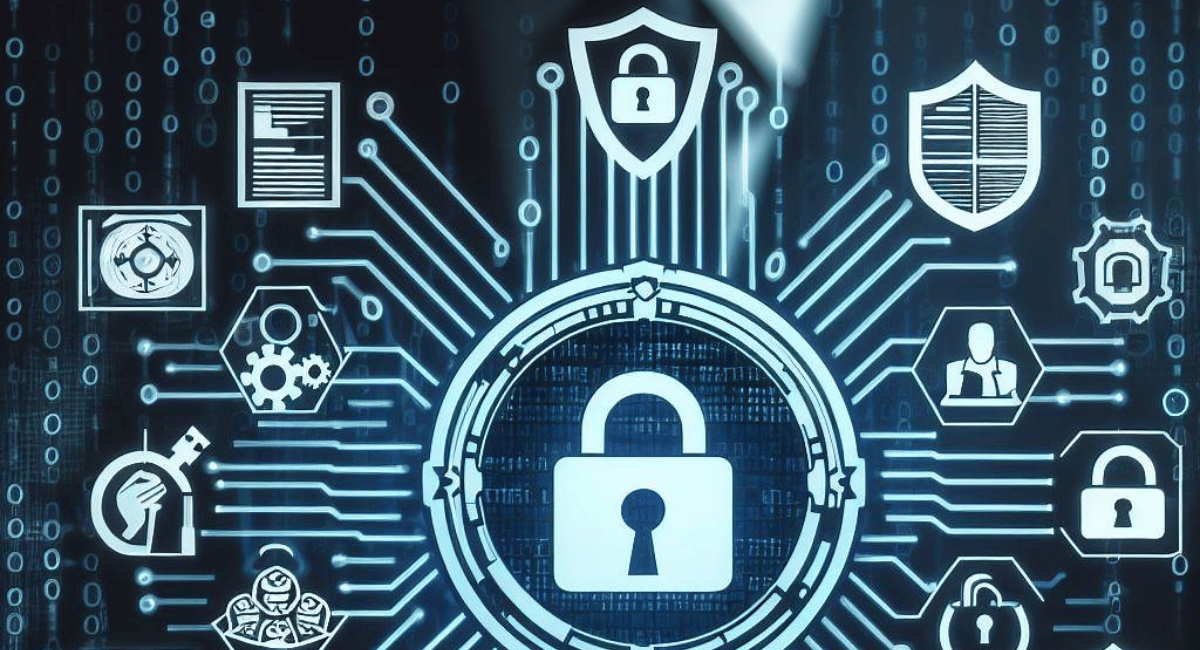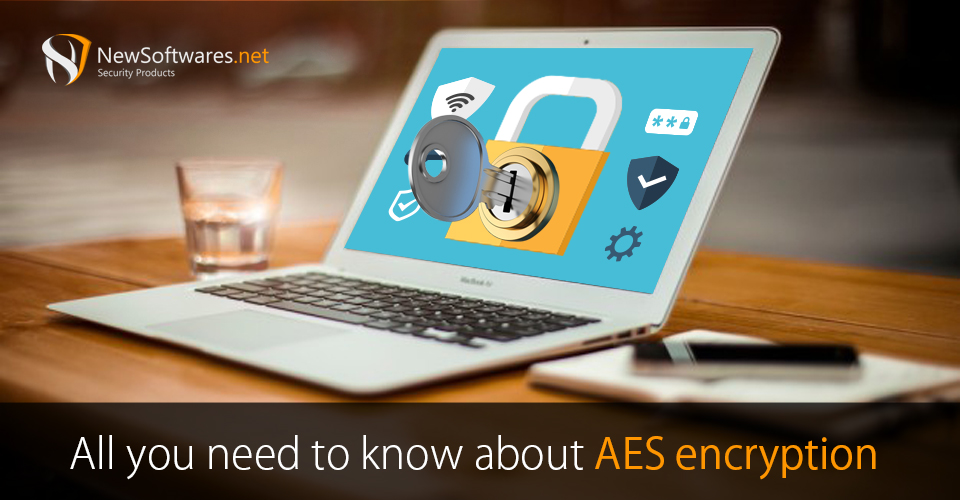Background:
The term known as cryptography came into presence a long time ago and the introduction of cryptanalysis has equaled the creation of cryptography. Also, the discovery of frequency analysis to the reading of encrypted communications has altered the course of history.
Encryption:

Encryption is a process of encoding some information or a message in such a way that can only be accessed by authorized users and thus preventing any unauthorized access. To better understand ‘encryption’, you must keep in mind that it does not prevent itself from being seen rather only denies the access to the unauthorized users.
How does it work?

You may understand such term by the fact that encryption is ‘the translation of data into a secret code’ and is the most effective way or method to protect your data by all means necessary. Once you have protected your data using encryption, you’ll need password or a secret key to access your files. When you protect your data, you encrypt it, and when you want to access your data, you simply need to decrypt it. However, once the data is encrypted, the data gets referred by ‘plain text’ while the data that gets encrypted is referred as ‘cipher-text.’
AES – Reliable enough to keep you secure!
AES encryption is termed as ‘unbreakable’ by the AES standards. It has been claimed that even if all the systems (laptops, PCs, and other similar devices) are combined to break the AES encryption, it will generate no success. Even if someone having all the systems of the world takes 13.7 billion years (age of the earth), they would still not succeed. That’s where such encryption becomes reliable for you to count on!
However, encryption is not a term that is very user-friendly to hear as some of the users consider encryption a bit drastic to work with. But in reality, it’s the other way around as encryption is quite easy, safe, reliable and adequate. Any average user may find it hard to get along with such process as it has some complexities, however, once you’re done with these complications, the benefit is much more than the struggling time incurred.
Types of Encryption
Data Encryption – DES
DES is the ideal standard of the US government which got promoted not only for business but also for government use. It was considered unbreakable in the 1970s, but its 56-bit key soon became obsolete for sensitive data due to the decrease in the cost of computing and increases in power.
Triple DES
This type is self-explanatory as its name implies what it does. It goes on in steps like encrypt, decrypt and encrypt again as it runs the DES three times in three different phases. However, it cannot improve the cipher but still provides a solid key length of 168 bits which is adequate.
AES
As soon as the US government realized that DES wouldn’t last much longer, they started looking for better and alternative methods of protection. NIST (National Institute of Standards and Technology) announced a competition for the next big thing that would include an improved algorithm and would finally be able to replace the previously obsolete DES option. However, there was too much competition comprising of Blowfish, RC6, etc. and they only settled for AES which were designed by two cryptographers belonging to the Belgian nation.
This type is quite effective and offers a cipher key of up to 256-bit finally AES gets usually implemented in 128 or 192-bit for proper performance observations or evaluations.
Steps Of AES Algorithm
1. Key Expansion: The initial key is expanded into multiple round keys.
2. Initial Round: The plaintext is combined with the round key using an XOR operation.
3. Rounds: Each round consists of four steps:
- Substitution: The bytes in the state are replaced with a corresponding value from a lookup table (S-box).
- Shift rows: The bytes in each row of the state are shifted cyclically to the left.
- Mix columns: Each column in the state is combined with its neighboring columns using a linear transformation.
- Add round key: The round key is combined with the state using an XOR operation.
4. Final Round: The final round is identical to the initial round, except no Mix Columns step is performed.
5. Output: The final state is the ciphertext.
Can AES Encryption Be Cracked?
Yes, AES encryption can be cracked, though it is considered to be one of the most secure encryption algorithms available. Cracking AES requires a significant amount of computing power and resources, as well as knowledge of the encryption algorithm and key.
Which AES Mode Is Fastest?
The fastest AES mode is the Counter (CTR) mode. This mode allows for parallel encryption of data, which makes it faster than other modes such as the Cipher Block Chaining (CBC) mode.
Why Is AES More Secure?
AES is more secure than other encryption algorithms because it uses a larger key size and more rounds of encryption. Additionally, the algorithm uses a combination of substitution and permutation operations to further increase security. This ensures that the same plaintext will not produce the same ciphertext when encrypted with the same key.
AES Working In Simple Terms
AES works by taking a plaintext message and encrypting it using a key. The key is used to create a cipher, which is a series of 16-byte blocks. Each block is encrypted using a combination of substitution and permutation operations. The output of the encryption is a ciphertext, which is then sent to the receiver. The receiver then decrypts the ciphertext using the same key, resulting in the original plaintext message.
How Long Will AES Last?
AES is considered to be a secure encryption algorithm and is expected to remain secure for many years to come. It is widely used in many industries and is regularly updated to ensure its continued security.
Is AES Outdated?
No, AES is not outdated. It is a widely used and accepted encryption algorithm that is still considered to be one of the most secure encryption algorithms available. It is regularly updated to ensure its continued security.
How Long Does It Take To Break AES?
It is impossible to accurately estimate how long it would take to break AES as it depends on the strength of the encryption key used. However, it is generally accepted that it would take a very long time and a great deal of computing power to break AES encryption.
Does Wi-Fi Use AES?
Yes, Wi-Fi networks typically use AES encryption to secure data transmissions. The level of encryption depends on the Wi-Fi network’s security settings, but it is usually AES-128, AES-192, or AES-256.
Best Key Size For AES Encryption
The best key size for AES encryption depends on the level of security needed. For most applications, AES-128 is sufficient and provides a good balance between security and performance. For higher levels of security, AES-192 and AES-256 may be used.
Is AES Good For Passwords?
Yes, AES is an excellent choice for passwords. It is a strong encryption algorithm and provides a high level of security. It is also relatively fast and efficient, making it a good choice for password protection.
Requirement For AES Encryption
In order to use AES encryption, you will need an encryption key. This key is used to encrypt and decrypt data, and it must be kept secure. Additionally, you will need an algorithm to perform the encryption and decryption, such as AES-128, AES-192, or AES-256. Finally, you will need a platform or software that supports AES encryption.
Can Hackers Break AES 256?

No, AES 256 cannot be broken by hackers. AES 256 is a strong encryption algorithm that is considered unbreakable. It has been tested extensively and is used by many governments and organizations around the world to protect their data. It is also used by many commercial companies to protect their data and customer information. As such, it is considered to be one of the most secure encryption algorithms available.
How Long Would AES-256 Take To Crack?
AES-256 is an extremely secure encryption algorithm and would take an extremely long time to crack. The exact time it would take to crack AES-256 cannot be accurately determined, as it depends on the computing power of the attacker, the complexity of the encryption, and other factors. However, estimates suggest that it would take billions of years for a powerful computer to crack AES-256.
What If AES Is Broken?
If AES is broken, then it would mean that the encryption algorithm is no longer secure. In this case, it would be necessary to switch to a different encryption algorithm that is more secure. Fortunately, there are many other secure encryption algorithms available, so it would be possible to switch to a different algorithm if AES is broken.
What encryption does the military use?
The U.S. military and other government agencies use a variety of encryption algorithms, including the Advanced Encryption Standard (AES). AES is a symmetric-key encryption algorithm, meaning that the same key is used to both encrypt and decrypt data. AES is widely used and is considered one of the most secure encryption algorithms available.
Can You Decrypt AES Without Key?
No, AES is a symmetric-key encryption algorithm, meaning that the same key is used to both encrypt and decrypt data. Without the key, it is impossible to decrypt AES-encrypted data.
Possible Keys Of AES
The number of possible AES keys is 2^256, which is a very large number. This means that the chances of guessing the correct key are extremely low.
AES Mostly Used Nowadays
AES is mostly used nowadays because it is considered to be one of the strongest encryption algorithms available. It is also relatively fast and efficient, making it suitable for a wide range of applications. Additionally, AES is widely supported by many different platforms and devices, making it a popular choice for encryption.
Three Versions Of AES
The three versions of AES are AES-128, AES-192, and AES-256. Each version uses a different key length, with AES-128 using a 128-bit key, AES-192 using a 192-bit key, and AES-256 using a 256-bit key. The longer the key length, the stronger the encryption.
Which Algorithm Is Better Than AES?
There is no single algorithm that is definitively better than AES. Different algorithms are better suited for different applications, so it is important to consider the specific needs of the application and choose the most appropriate algorithm. Some algorithms that are sometimes considered to be better than AES include Two fish, Serpent, and Camellia.
Algorithm Used By AES
AES uses the Rijndael algorithm, which is a symmetric-key encryption algorithm. It is based on the substitution-permutation network and uses a block cipher with a block size of 128 bits and a key size of 128, 192, or 256 bits.
Use Of AES Encryption
AES encryption is used to protect sensitive data, such as credit card numbers, passwords, and other confidential information. It is also used in secure communication protocols, such as TLS and SSH, to protect data in transit. AES is also used to encrypt files, such as documents and media, to prevent unauthorized access.
Is AES The Strongest Encryption?
No, AES is not the strongest encryption. Other encryption algorithms, such as RSA, Elliptic Curve Cryptography, and Quantum Cryptography, are considered to be stronger than AES.
Reasons: AES The Best
AES is considered to be the best encryption algorithm because it is fast, secure, and widely used. It is also recommended by the U.S. government for protecting sensitive information. AES is used by many organizations and individuals to protect their data from unauthorized access.
When Should AES Be Used?
AES should be used when the data being encrypted needs to be kept secure and confidential. It is an ideal choice for applications that require a high level of security, such as banking, online payments, and government communications. AES can also be used to protect stored data that needs to be kept safe from unauthorized access.
